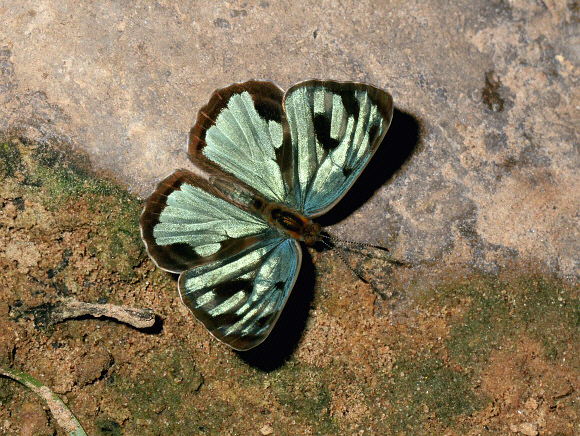
Introduction
The Biblidinae are known for their diverse but simple and colourful patterns. In the neotropics their representatives include the subtribe Eubagina, within which are placed the 40 Dynamine species.
Most Dynamine species have highly reflective bluish or greenish uppersides, often in combination with a dark apex and borders. Dynamine postverta is easily recognised by the group of 4 squarish dark spots on each forewing. The underside is similar to that of other Dynamine species, being white, marked with narrow bands of orange. In common with several other species there is also a pair of blue-centred submarginal ocelli on the underside hindwings.
Dynamine postverta (previously known as D. mylitta) is the commonest and most widespread member of the genus, being found throughout most tropical and subtropical areas of central and South America, from Mexico south to Argentina and Paraguay.
Habitats
This species is found in a wide variety of habitats including primary rainforest, humid deciduous woodlands, scrubby grassland, farmland etc; at altitudes between sea level and about 900m.
Lifecycle
The eggs of most Dynamine species are white. They are laid singly on the leaf axils or flower buds of Euphorbiaceae genera such as Tragia and Dalechampia. The larvae are described by DeVries as being slug-like, with tiny rosettes of spines on the back. The pupae are greenish, elongate, with a slightly bifid head and a pronounced dorsal keel, and suspended by the cremaster from stems or leaves.
Adult behaviour
The butterflies are very active in hot sunny conditions, when they can be seen flying rapidly in zig-zag fashion, investigating along forest tracks. In the cooler temperatures of early morning they can often be found basking on foliage, usually with their wings held half-open.
Males visit dry river beds, and damp ground along sunlit forest tracks and roads. They habitually flick their wings open while moving about in a fairly erratic fashion as they probe for minerals on the ground.

